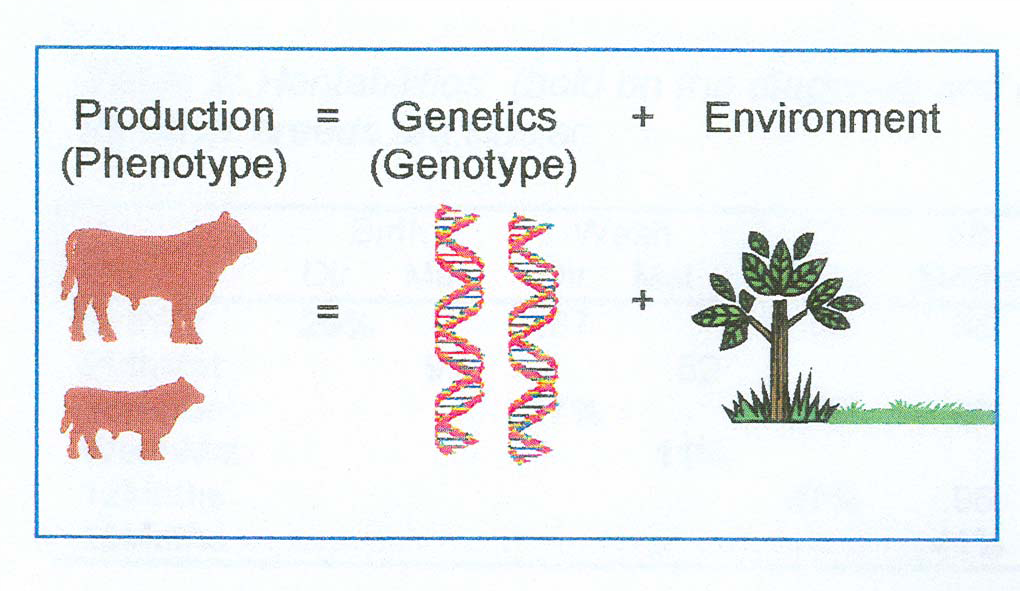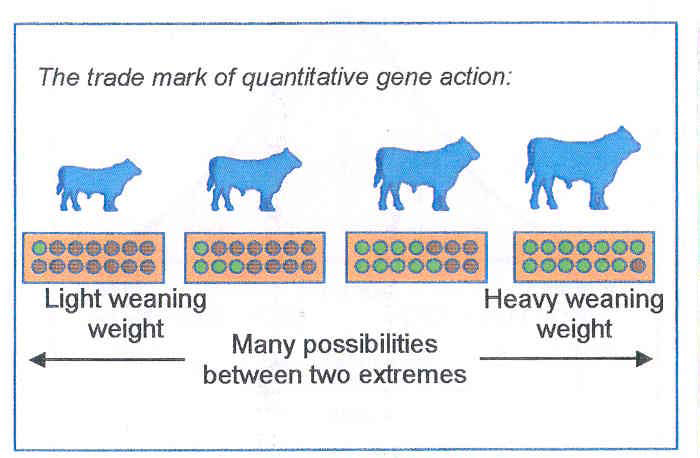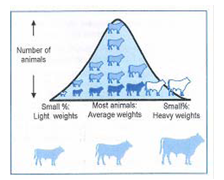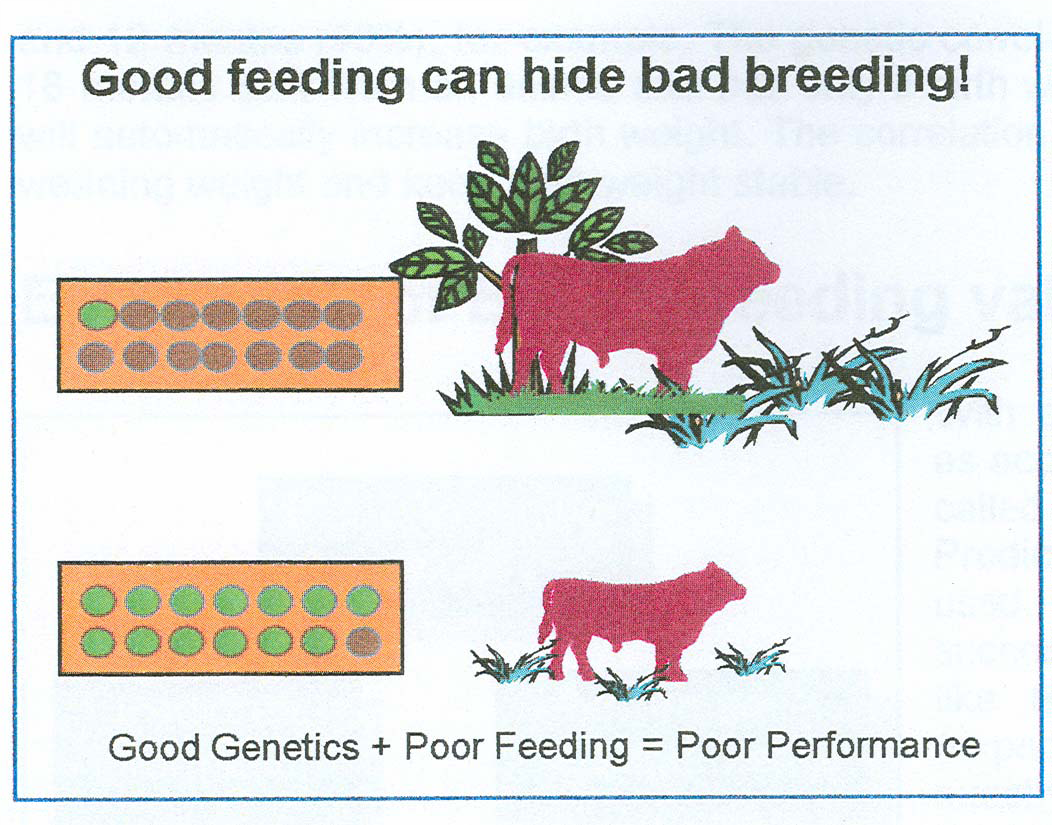Quantitative inheritance is very common in nature; it is common among plants and animals. Most production traits of farm animals such as growth rate, milk production, and hair and wool production are inherited in this way. Many genes control quantitative traits, each with a small effect, while the environment plays a more important role in the expression of this trait. To fully understand what is meant by certain expressions let us explain a few terms.
Genotype
The genotype of a cow, ram or chicken can be described as that specific individual’s genetic make-up, in another word, the unique genetic composition of that individual. No two individuals, except for clones and identical twins, have the same genotype. At present, the genotype cannot be identified because it is inside the very small cell nucleus. Part of its expression in the individual is also obscured by the environmental influence on the development of the individual.
The Phenotype
The phenotype, on the other hand, is how the individual expresses itself. In other words, how the individual will look like or what its mass, colour or built will be.
The phenotype is a measurable expression of all environmental and genetic contributions put together in the individual, plus the interaction that the environment changes have on the gene combination of the genotype.
In short: Phenotype = Genotype + Environment + Interaction of the environment and the genotype.
The Meaning of Quantitative Inheritance for the Farmer

The phenotype (P) of an animal refers to the measurement of the animal, e.g. weaning weight (or any other performance record). The genotype (G) is the total genetic composition of the animal for a specific trait and the environment (E) refers to all environmental effects that have an influence on the measurement.
Because most of the production traits are inherent in a quantitative way, it is very important that the breeder of the farm animals has a basic understanding of how quantitative traits can be selected.
Heritability
Heritability is an indication of the number of genes, that determine a certain production trait, that is transferred to the progeny. In genetics, the term positive genes are used for the genes that support and contribute to the development of the trait while the term neutral genes are used for the genes that do not support or contribute.
Body Size of a Sheep or Cattle

A small sheep and a large sheep will have the same number of genes that are responsible for the size of the sheep. If the two sheep are kept in the same environment; the large sheep will have more positive genes for body size and the small sheep more neutral genes.

The environment also plays a very important role and may be responsible for 70% of the size of the sheep and the genes only for 30%. Then we say the heritability of body size is 30%. That means that 30% of the body size was inherited from the parent’s genes. One important aspect to remember is that although the heritability of a trait is 30%, it means that 30% of the factors determining the body size were inherited from the parents. Each parent contributes only half of the genes responsible for body size.
If both parents contribute, say 10 positive genes for body size, the body size of the offspring will be bigger than when one parent contributes 5 positive genes and the other parent 10 positive genes, and the environment is kept the same.

If an animal with high genetic potential is not fed, it will be impossible for him to reach his genetic potential. A genetically inferior animal, on the other hand, which is well-fed, will perform much better than his genetic potential IN THE SAME ENVIRONMENT, however, the animal with superior genetics will perform better. Genetic improvement is permanent and is transmitted to the progeny, which is not the case with environmentally induced good performance.
How does a Farmer use Quantitative Inheritance to Improve his Flock?
Repeatability
As seen in qualitative traits, some bulls will breed purely for certain characteristics. In other words, he is homozygous for that aspect. He will repeatedly transfer a trait to his progeny.
However, quantitative traits, such as body size and milk production, will not be so clear-cut.
After careful selection and by means of line and inbreeding for a specific trait, the “positive” genes that enhance that trait, will accumulate in the progeny. We will say the progeny becomes more Homozygotic for a production trait. That animal will transfer his super gene combination to his entire offspring.
We call that the animal’s high repeatability for a specific trait.
Click here to view a video that explains Genotype Vs Phenotype.